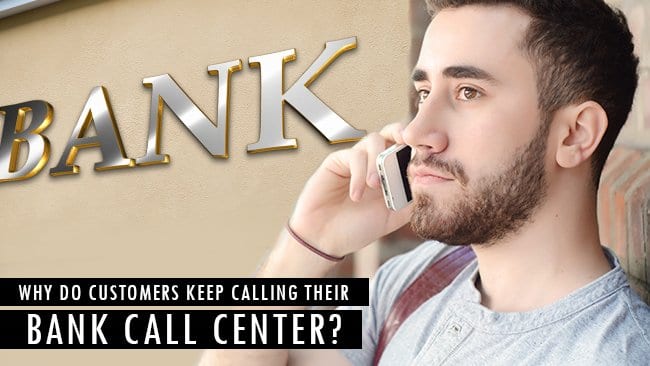
Who is more likely to contact their bank’s call center – Baby Boomers or Millennials? The answer may not be what you would expect.
According to a study by Bain & Company. it’s Millennials who call their bank more often, on an average of 1.4 times in a three-month period, almost three times the 0.5 rates of older customers! At the same time, 60% of Millennials reported calling a bank contact center at least once in the last three months, compared with 42% of Baby Boomers. Let’s look at some of the reasons:
Why are Customers Still Calling So Much?
After surveying 5,300 American banking customers, Bain & Company revealed that, despite Millennials having grown up in the digital age and typically being more familiar with mobile technology, they are actually largely still learning how to complete common mobile transactions even for routine tasks, such as bill paying, check deposits, money transfers and issue resolution. However, at the same time, this study seems to suggest that Baby Boomers suffer from some of the same impediments. While more experienced bankers, they are less familiar with digital technology, and therefore, need additional support to become comfortable with self-banking, with only one out of six (17%) having received mobile app training, compared to 2% of Millennials. The result is one-half of older customers use tellers simply out of habit, and 75% of the time they are doing so for simple actions that could have been quickly completed on their own.
All of this suggests that banks would benefit greatly from offering more educational opportunities for people of all ages in digital adoption. As almost three-quarters of reported branch transactions and more than half of phone interactions deal with deposits, withdrawals, checking one’s account and other routine matters that could be better handled through self-banking at less expense to banks, the of which can potentially cost a typical U.S. bank with 1,000 branches $70-$80 million of potential savings.
“It is well known by now that digital self-service is much more cost-effective for banks — about one-tenth the cost of a teller visit or live phone call,” said Gerard du Toit, head of Bain’s Banking Practice and lead author of the report. “Even with that knowledge, and despite the increasing power and presence of mobile, U.S. banks have a long way to go to realize the promise of digital self-service.” So where does the problem lie?
Fueling Digital Adoption
Indeed, increasing digital adoption among the old and the young can be very challenging, but it is well worth the reward. Bain’s study also analyzed how some banks are stimulating this process in their customers:
- Proactive interventions by the frontline service center and branch representatives that foster awareness and encouragement through the education of digital mobile banking services.
- Soliciting customers to experience digital banking with the personal instruction of an employee they already know and trust. At one major North American bank, this approach achieved a 70 percent conversion rate for future interactions.
- Agile techniques that aim to solve the causes of routine branch phone calls and visits. Banks utilizing this approach have succeeded in reducing branch and call center volumes by 20 percent in 12 months.
In the end, a thorough and proper customer digital migration is financially well worth the effort, and banks that design an easy and convenient digital self-service experience stand a better chance of creating loyal customers of all ages, now and into the future.
[About the author] Dylon Mills is the Director of Marketing Content Strategy & Development at Uniphore. As such, Dylon’s main responsibilities are to strategize, create and deliver content for Uniphore’s product portfolio that aligns with the global Go-To-Market strategy, corporate positioning, and marketing campaigns. Dylon’s prior work experience includes Product Management at one of the top Fortune 500 Technology companies, Symantec Corporation. Outside of work, Dylon enjoys problem-solving and any project that includes building/tinkering with tools. Dylon holds a BS Consumer Economics from the University of Georgia.
Dylon Mills is the Director of Marketing Content Strategy & Development at Uniphore. As such, Dylon’s main responsibilities are to strategize, create and deliver content for Uniphore’s product portfolio that aligns with the global Go-To-Market strategy, corporate positioning, and marketing campaigns. Dylon’s prior work experience includes Product Management at one of the top Fortune 500 Technology companies, Symantec Corporation. Outside of work, Dylon enjoys problem-solving and any project that includes building/tinkering with tools. Dylon holds a BS Consumer Economics from the University of Georgia.
)